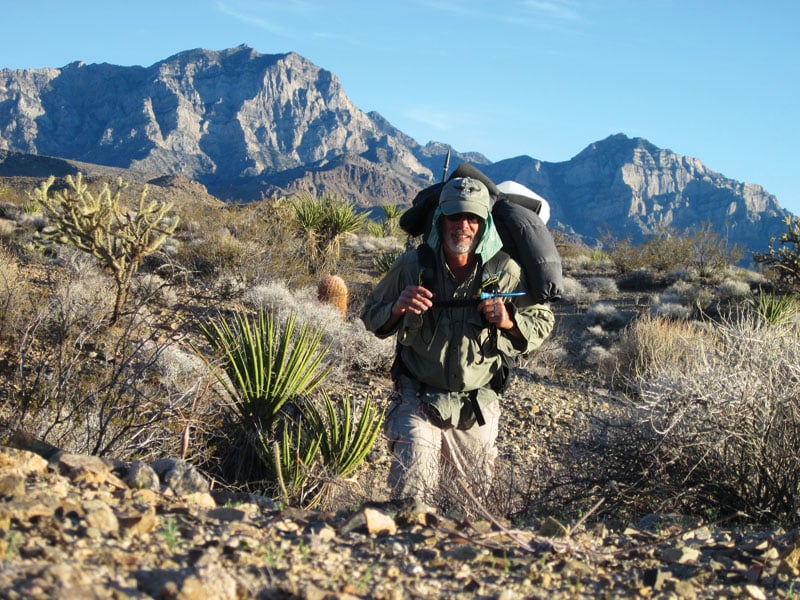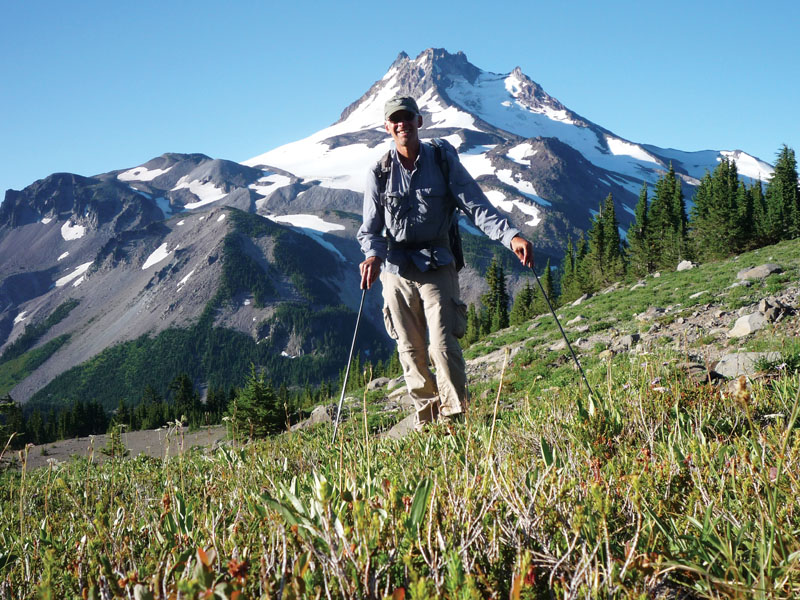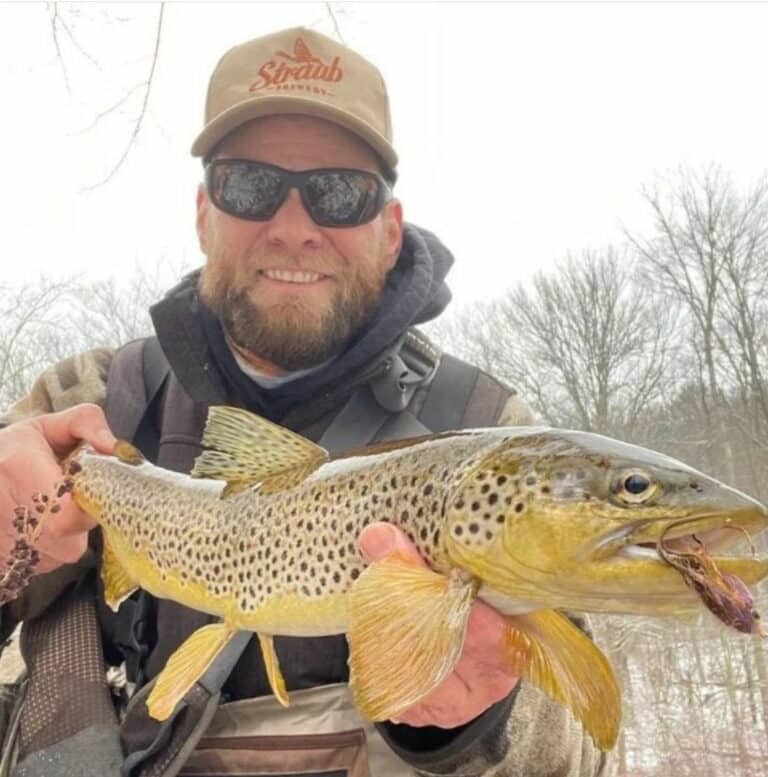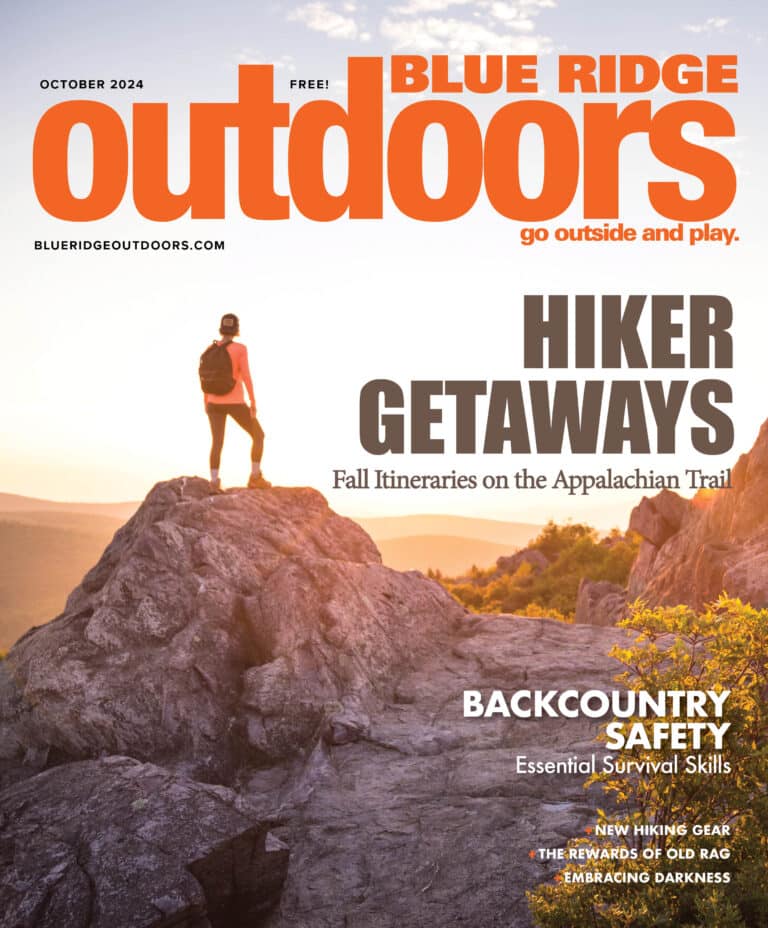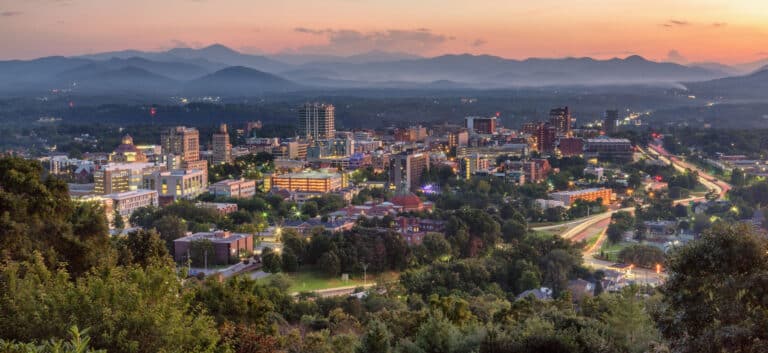Photo by Buck Nelson
Were there a lifetime achievement award in the category of DIY Outdoor Superstar, Bruce “Buck” Nelson would invariably top the list of recipients. He explored the Alaskan frontier during his seven-year tenure as a Coast Guard parajumper and a smokejumper.
Then Nelson decided to get back to the land, constructing himself a 16 x 20’ cabin just outside of Fairbanks (“With all the regular amenities, minus running water.”). Whenever Nelson wasn’t parachuting from DC-3s and battling wildfires, he was off exploring the great Alaskan wilds. Nelson exhibited a penchant for the dramatic: Like some kind of mutant thrill-junky, he systematically sought out and proceeded to tackle the biggest, most notorious high-mileage solo excursions known to man.
After thru-hiking the Appalachian Trail in 2001, he canoed solo down 2,300 miles of Mississippi River from headwaters to the Gulf of Mexico.
Photos courtesy bucktrack.com
Then in 2006, hoofed, paddled, hunted, and fished his way across 1,000 miles of Alaska’s Brooks Range, abiding by the rather hardcore imperative of “live by the land or perish.” His trek was featured in “Alone Across Alaska”, a documentary described by Backpacker Magazine as “Oscar-worthy for indie outdoor films.” Nelson has also conquered the 3,100-mile Continental Divide Trail, the 2,650-mile Pacific Crest Trail, and in 2012, he became the first thru-hiker of the 2,223-mile Desert Trail from Mexico to Canada.
Most recently, Nelson paddled 557 miles from the source of the Yellowstone River to its convergence with the Missouri, and he spent 70 days in Alaska’s Admiralty Island’s Kootznoowoo Wilderness area, living exclusively off the land.
Interspersed throughout these wanderings were a slew of international adventures, including summits of Aconcagua and Kilimanjaro.
What exactly drives Nelson to pursue these big-mileage solo expeditions? BRO caught up with Nelson on a rare moment off-trail to find out.
What has been your most exalted moment on the trail?
BN: It would be hard to beat a wildlife encounter I had during the river portion of my Alaska traverse. I was drifting down a remote river and spotted a black wolf. Nearby was a caribou. When the wolf first rushed the caribou, the caribou reared up on its hind legs and fled in terror. With the wolf catching up, the caribou leapt into the river and swam for its life, passing just a few feet from my inflatable canoe. Its eyes were huge. I floated right past the black wolf, which was still staring at the caribou. They were both so focused—one on escape and the other on its meal—they barely noticed me. That was intense.
What about your most life-threatening and/or terrifying experience you’ve yet to encounter?
BN: On the Pacific Crest Trail I hiked several hundred miles with another hiker whose hiking style matched mine. We came to a creek roaring with icy snowmelt. The ‘official’ crossing was marginal, with a fifteen-foot section of falls a stone’s throw below it. Not a good deal. We went upstream in to a better spot. Still marginal looking, but a bit easier and farther from the falls. I wanted to take some time, to double-bag gear in case we fell in, maybe scout a bit more. She wanted to get it over with. She waded in, looking very wobbly as the water deepened, but kept going. She fell in the middle and was swept away. I ran downstream, hoping to be able to grab her when she came by. As I got to the main crossing I thought, “If I don’t see her here, she’s dead.” When I got there, I couldn’t see her. I stood looking up and downstream. Nothing. I’m sure my face went white. I was yelling for her. Thankfully, I heard her answer—she’d made it to some brush just upstream. She and her gear were completely soaked. She was a trooper. No whining. But it was mighty scary for us both.
What’s the most number of days you’ve gone in the wilderness without crossing paths with another human being?
BN: I have gone for weeks without seeing people in Alaska. I’m unusual in that being alone for weeks doesn’t bother me at all. Doing trips solo is a big advantage for me. Pacing and goals are usually different between partners. Team hiking always involves compromises that sometimes lead to friction. Hiking with other people can be a positive, but it can also be a negative. In the river crossing story I related, my partner wouldn’t have tried to cross on her own, but she didn’t want to hold us back and she almost paid dearly.
Were you ever surprised by a human encounter?
BN: On my Alaska traverse I went weeks without seeing another soul. One day I was hiking along a beautiful mountain valley and saw a reflection up ahead. I thought, “What could that possibly be?” Then I saw a few dots and another reflection. “The sun reflecting off caribou antlers,” I figured. Seemed too early in the year for shiny antlers though. Finally I figured out what it was. The dots were people and the reflection was a Frisbee. When I got there it was a group of about fourteen young ladies! Half had flown out to a lake and were walking back to the village, the other half started at the village and were walking to the lake. They had just met at the halfway point. I have to admit, it was fun seeing their faces when they I told them that I was in the middle of a 1,000-mile trek.
What was your most coveted trek?
BN: My Alaska traverse across the Brooks Range was an incredible adventure. This was before Google Earth. When I tried to ask people if certain passes were doable, the standard answer was “I don’t know.” It was real exploring. I didn’t know what I’d find, what I’d see, if there was even enough time before winter for me to complete the trip. At times there was no indication that humans had ever existed. There was only wilderness in every direction. I had many close encounters with grizzlies, moose, Dall sheep, musk ox, and caribou. I had a pack of wolves howling outside my tent. I came upon wolf puppies, found an old plane wreck, and discovered ancient artifacts.
What was your most challenging excursion?
BN: The Desert Trail, Mexico to Canada, was very tough, especially logistically. No one had thru-hiked the Desert Trail before. I had to figure out how I’d resupply and get water. It took over two weeks just to lay it all out and pick up water and food caches. The toughest part was making sure my caches would be intact when I got to each point along the trail.
What do you get from these wilderness steeped, solitary quests?
BN: For some people the answer would be that these experiences aren’t important, but pointless and narcissistic. For me, I’ll answer that question with two quotes:
“All America lies at the end of the wilderness road, and our past is not a dead past, but still lives in us. Our forefathers had civilization inside themselves, the wild outside. We live in the civilization they created, but within us the wilderness still lingers. What they dreamed, we live, and what they lived, we dream.”
—T.K. Whipple
“What we’re really seeking… is an experience where we can feel the rapture of being alive.”
—Joseph Campbell
To learn more about Buck’s upcoming plans, take a gander at journals and photos from his many prior travels, peruse exclusive gear reviews, or get yourself a copy of his scintillating documentary (available on DVD), “Alone Across Alaska: 1,000 Miles of Wilderness,” visit www.bucktrack.com.
